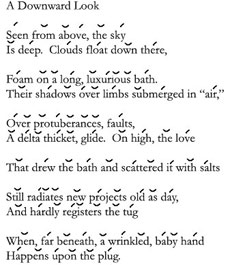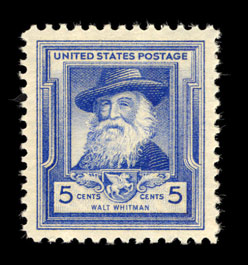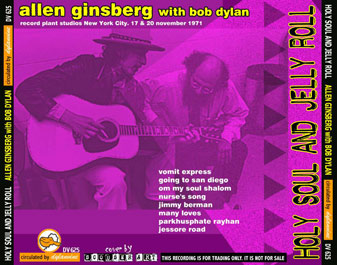
Expressionist poetry.
Free verse caught fire during America’s two great forays into expressionist poetry: the American Transcendentalist movement of the mid-19th century that included Henry David Thoreau and influenced Walt Whitman; and the Beatnik poetry of the 1950s and 1960s, when Allen Ginsberg, Gregory Corso, aging Beat influencer William Carlos Williams, and others took center stage. Indeed, hundreds of high school teachers and college poetry professors can thank free verse – and the free-form, free-verse lyrics penned by 1960s folk and rock musicians – for piquing their students’ interests in writing poetic verse.

Meter is still important in free verse, as illustrated in this poem by James Merrill.
|
Ancient roots.
While free verse seems modernistic, its roots go back to medieval alliterative verse and even to the Bible. The Bible’s "Song of Songs" is written in what we would now call free verse. Many of the earliest Ancient Greek poets wrote in lines unmeasured by syllables and beat while they were developing what would become lyric poetry. In later Ancient Greece and Rome, however, fixed forms such as the ode, epic, and a variety of measured lyric poetry ruled the literary land.

Modern interpretations.
The promise of irregular cadence continued to beckon unconventional and narrative poets, and began appearing as vers libre in the 19th century French poetry of Jules Laforgue and Gustave Kant. Germany’s Johann Wolfgang von Goethe also experimented with free verse. By the latter half of the century, Walt Whitman had mastered the form, and bards such as Christina Rosetti, Robert Louis Stevenson, Charles Baudelaire, Gerard Manley Hopkins, and W.E. Henley were writing free verse. Still, it wasn’t until Richard Aldington used the term "free verse" in a 1915 anthology introduction that the form took an English name.
Yet, as T.S. Eliot warned, "No verse is free for the man who wants to do a good job." While free verse is irregular, lyrical, and unmeasured by line counts and stanzas, metrical and rhythmic precision remain just as vital as in other poetic forms.

